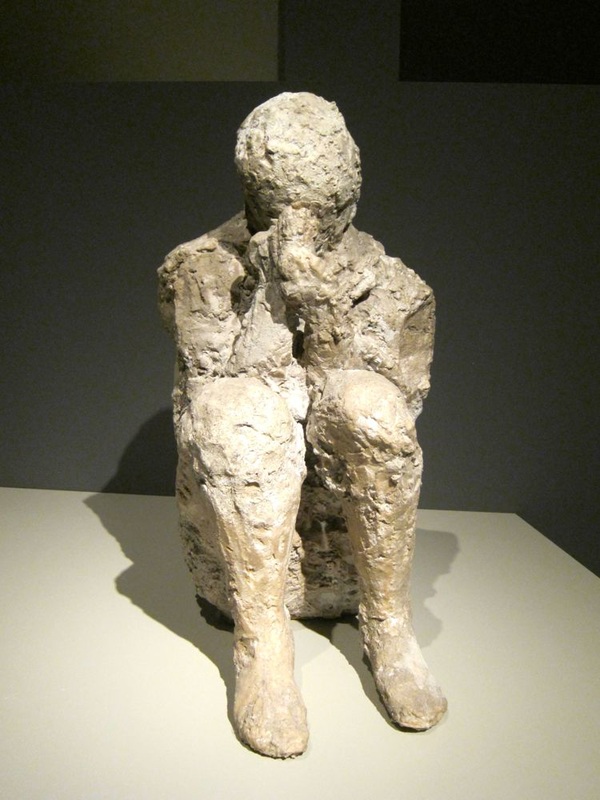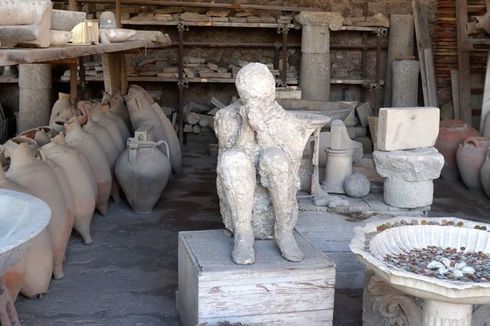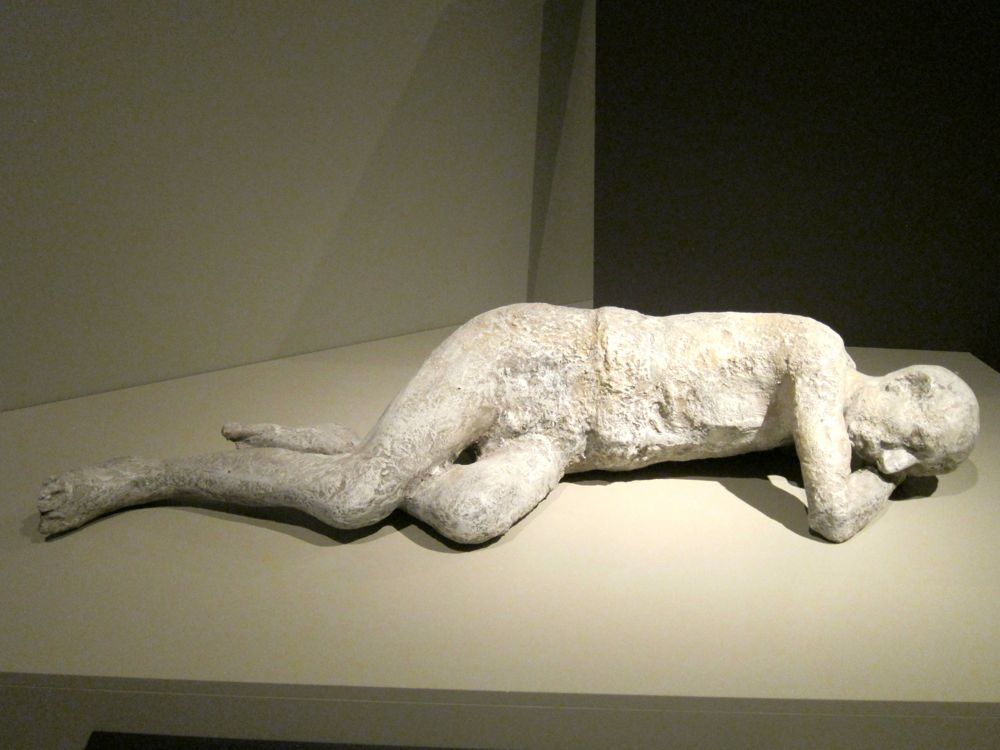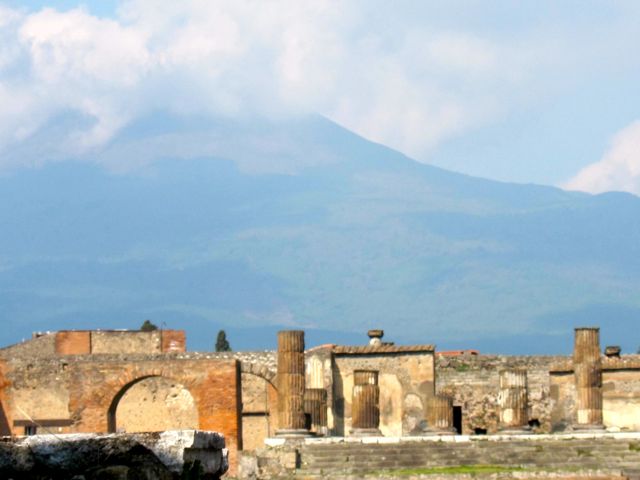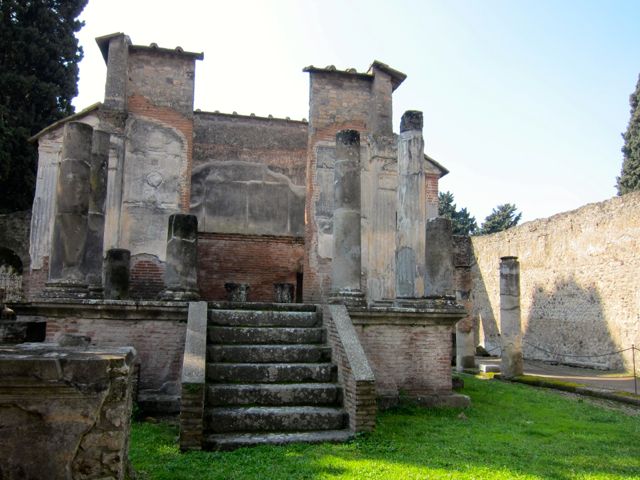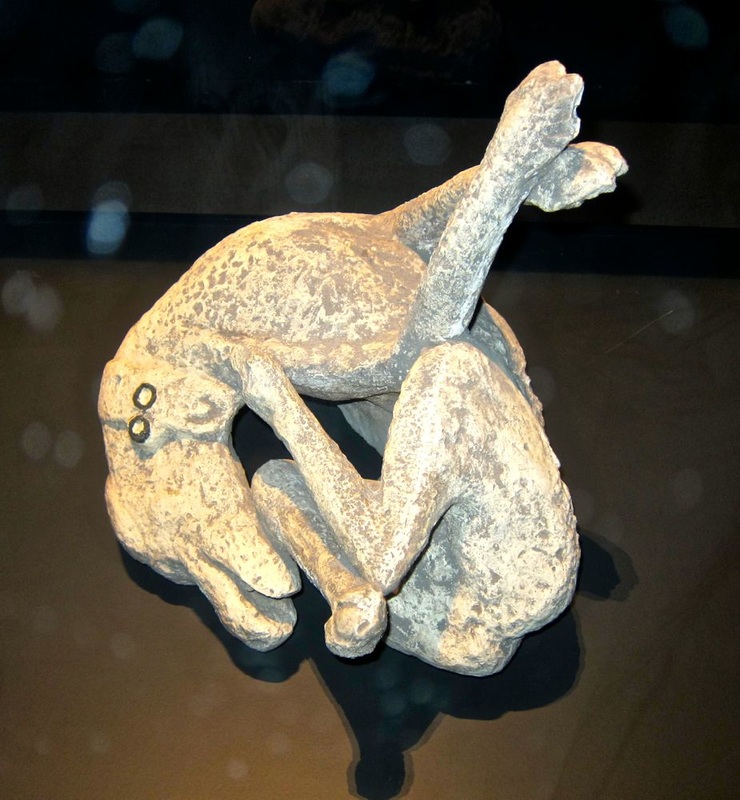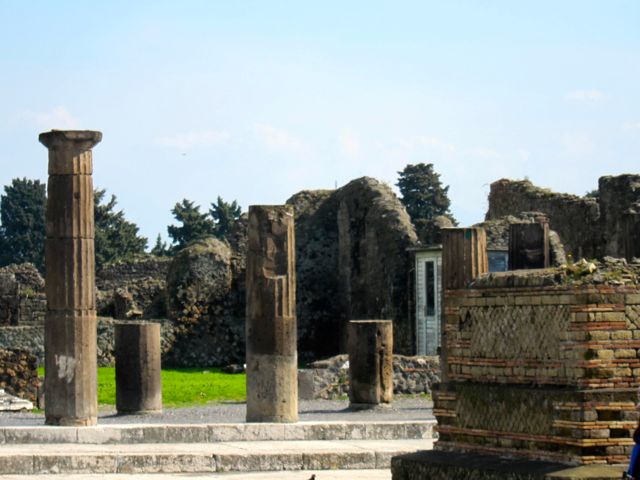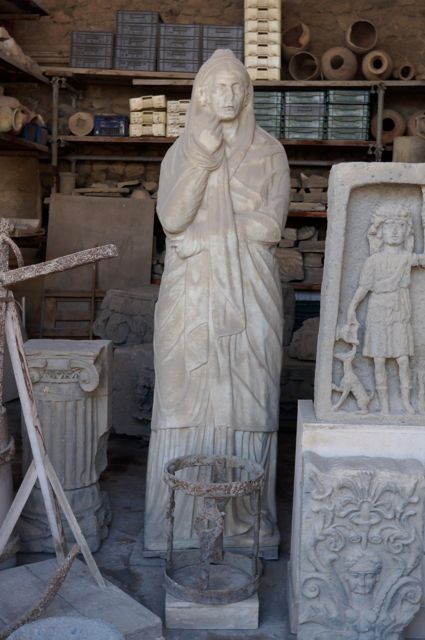Pompeii: A World Frozen in Time
A young boy crouched, mouth open, as if pleading but he’s not there. It’s just the hardened volcanic ash that has locked him forever staring with disbelief at the exploding mountain, Vesuvius, close to his city of Pompeii.
Eyewitness Account of the Vesuvius Eruption
This person was not lucky but there was one who survived this destruction in 79 A.D. and wrote later in his letters to his friend Tacitus of his experience.
This was Pliny the Younger who happened to be there at that time staying in the house of his uncle, Pliny the Elder, an official in the Roman Court in command of the fleet at the Bay of Naples. His uncle died in a mission to help people who were in danger in the area but Pliny the Younger lived to write of his experience to his friend, Tacitus.
A very good description of this eyewitness experience is well narrated in this site:
This person was not lucky but there was one who survived this destruction in 79 A.D. and wrote later in his letters to his friend Tacitus of his experience.
This was Pliny the Younger who happened to be there at that time staying in the house of his uncle, Pliny the Elder, an official in the Roman Court in command of the fleet at the Bay of Naples. His uncle died in a mission to help people who were in danger in the area but Pliny the Younger lived to write of his experience to his friend, Tacitus.
A very good description of this eyewitness experience is well narrated in this site:
Ammalato
Found sleeping peacefully in Via Stabiana, this Ammalato (Sick Man) seemed to have not been affected by the agonies of the explosion of Pompeii. Another casting by Fiorelli of the victims of the Pompeii explosion.
Found sleeping peacefully in Via Stabiana, this Ammalato (Sick Man) seemed to have not been affected by the agonies of the explosion of Pompeii. Another casting by Fiorelli of the victims of the Pompeii explosion.
The Eruption of Mt Vesuvius
It was in 79 A.D. when this active volcano spewed out poisonous vapours, molten lava that buried the surrounding cities most especially, Pompeii.
The city remained dormant for 1800 years until 1748, when excavations started. Such excavations continue today to reveal interesting vignettes of daily life in Pompeii, its markets, shops, bakeries, temples, alleyways, inner recesses of its houses, and even road repairs. When you visit now, you'll see abundant evidence of the people's daily activities in the city.
It was in 79 A.D. when this active volcano spewed out poisonous vapours, molten lava that buried the surrounding cities most especially, Pompeii.
The city remained dormant for 1800 years until 1748, when excavations started. Such excavations continue today to reveal interesting vignettes of daily life in Pompeii, its markets, shops, bakeries, temples, alleyways, inner recesses of its houses, and even road repairs. When you visit now, you'll see abundant evidence of the people's daily activities in the city.
There are many volcanoes in the world and from Krakatoa to Mt. St. Helen’s we can measure ferocity and impact but only in Pompeii can we see the mark of the volcanic ash on those that couldn’t run.
Survivors talked of a wall of volcanic mud which first engulfed Herculaneum, a small town close to Pompeii. Many of the citizens fled to Pompeii only to be enveloped the next morning by clouds of volcanic ash which caused instant death to many.
The town, too, is frozen with houses and temples protected for 1800 years by the ash that poured over it in a few hours.
Survivors talked of a wall of volcanic mud which first engulfed Herculaneum, a small town close to Pompeii. Many of the citizens fled to Pompeii only to be enveloped the next morning by clouds of volcanic ash which caused instant death to many.
The town, too, is frozen with houses and temples protected for 1800 years by the ash that poured over it in a few hours.
What You Can See in Pompeii
Then, in 1911, Vittorio Spinazzola, who started excavating toward the east, about half a kilometer of the main east-west road in the city, revealed to the world the humdrum of life in that ancient city where rich and poor, enslavers and enslaved people, humans and animals rubbed shoulders.
Now, as meter by meter is uncovered by archaeologists, we get an increasingly complete picture of both the art and engineering that made Rome stand like a colossus over the Vandals, the Goths, the Belgae and Gauls that trembled before its mighty armies.
All can be seen in Pompeii. The ceramic inlays, the pots and dishes, the baths and heating systems and roadways. A beautiful town that in one night froze unchanging with its people for eternity.
Then, in 1911, Vittorio Spinazzola, who started excavating toward the east, about half a kilometer of the main east-west road in the city, revealed to the world the humdrum of life in that ancient city where rich and poor, enslavers and enslaved people, humans and animals rubbed shoulders.
Now, as meter by meter is uncovered by archaeologists, we get an increasingly complete picture of both the art and engineering that made Rome stand like a colossus over the Vandals, the Goths, the Belgae and Gauls that trembled before its mighty armies.
All can be seen in Pompeii. The ceramic inlays, the pots and dishes, the baths and heating systems and roadways. A beautiful town that in one night froze unchanging with its people for eternity.
What Was Pompeii Like Before the Eruption of Vesuvius?
When digging started in 1748, the researchers discovered houses and possessions left by people who fled and because the ash covered the city immediately, these frescoes, murals, statues, homes, furniture, jewelry, and coins were perfectly preserved as we can now see in the museum there. They even found carbonized loaf of bread.
The previous pictures showed humans and animals who were not able to flee.All these artifacts describe to us the life in Pompeii before the eruption of Mt. Vesuvius. Pompeii today is a snapshot of that life.
When digging started in 1748, the researchers discovered houses and possessions left by people who fled and because the ash covered the city immediately, these frescoes, murals, statues, homes, furniture, jewelry, and coins were perfectly preserved as we can now see in the museum there. They even found carbonized loaf of bread.
The previous pictures showed humans and animals who were not able to flee.All these artifacts describe to us the life in Pompeii before the eruption of Mt. Vesuvius. Pompeii today is a snapshot of that life.
The foot of Mt. Vesuvius was a popular holiday destination then. Many of Rome's wealthy owned homes here and social and economic life centred in Pompeii.
The ruins today showed elegant villas lining the paved streets of this resort city. About 20,000 were said to have lived in this city with its taverns and cafes, bathhouses, Forum, shops and market places.
The ruins today showed elegant villas lining the paved streets of this resort city. About 20,000 were said to have lived in this city with its taverns and cafes, bathhouses, Forum, shops and market places.
